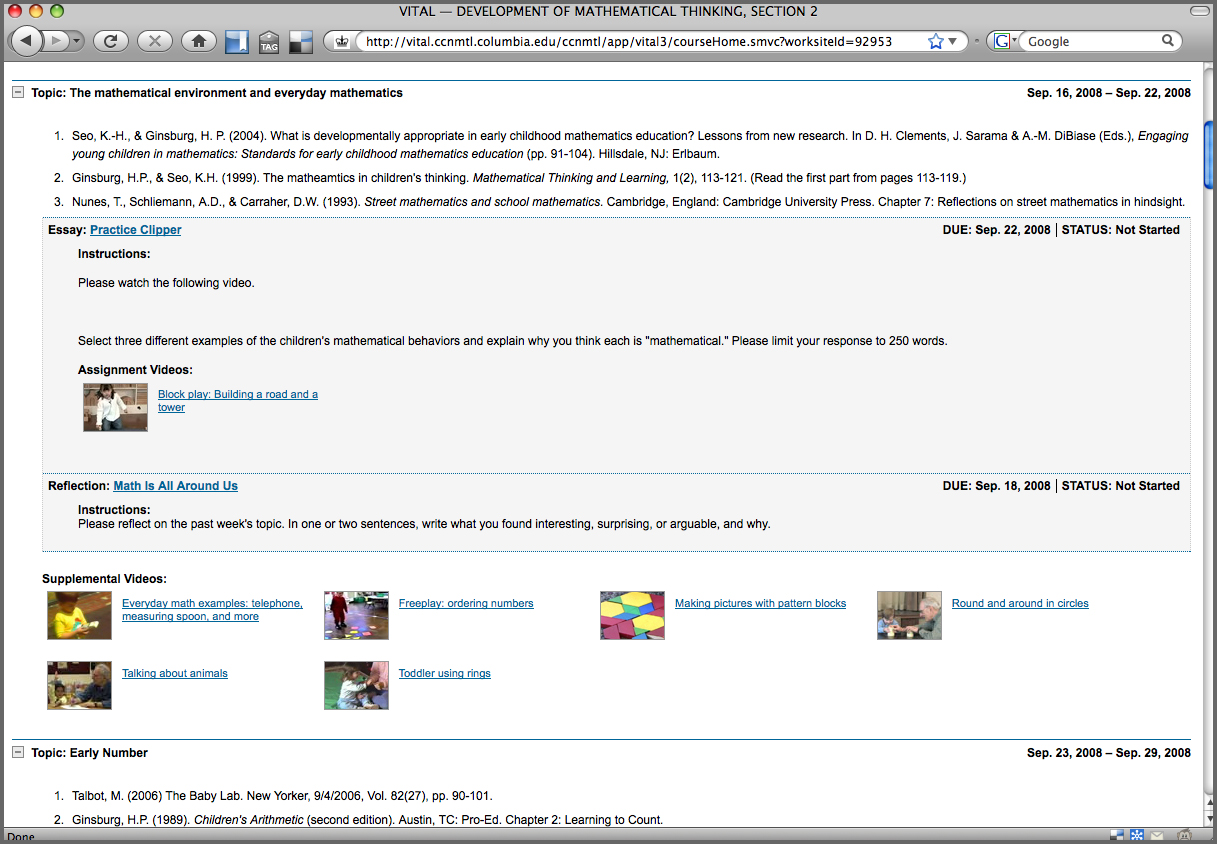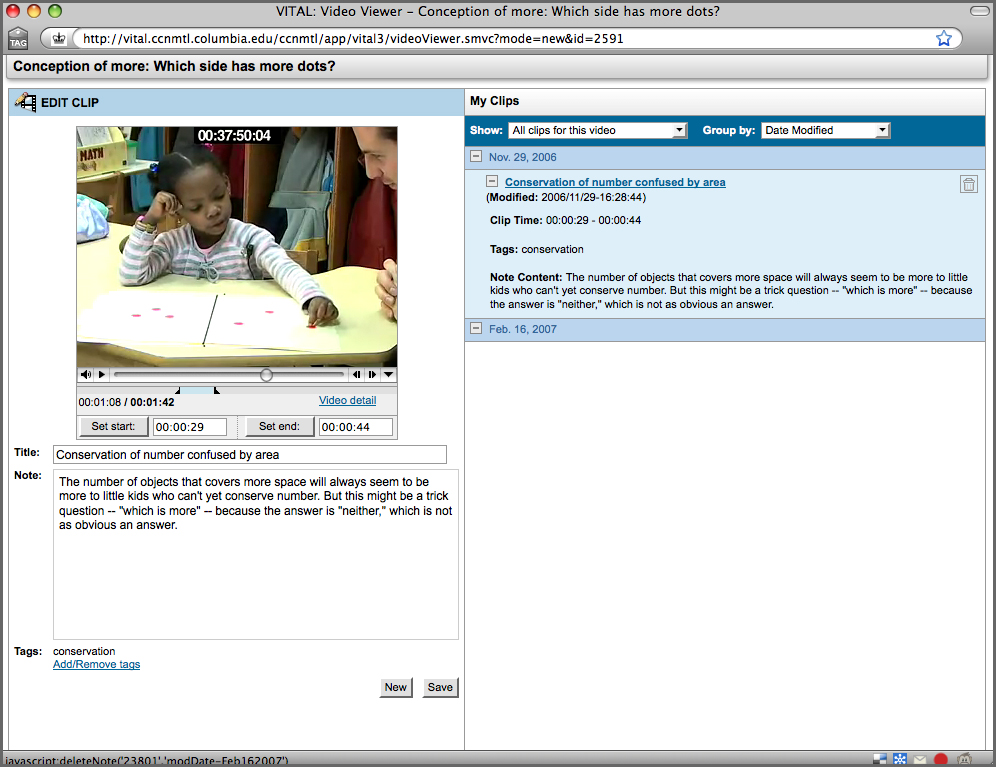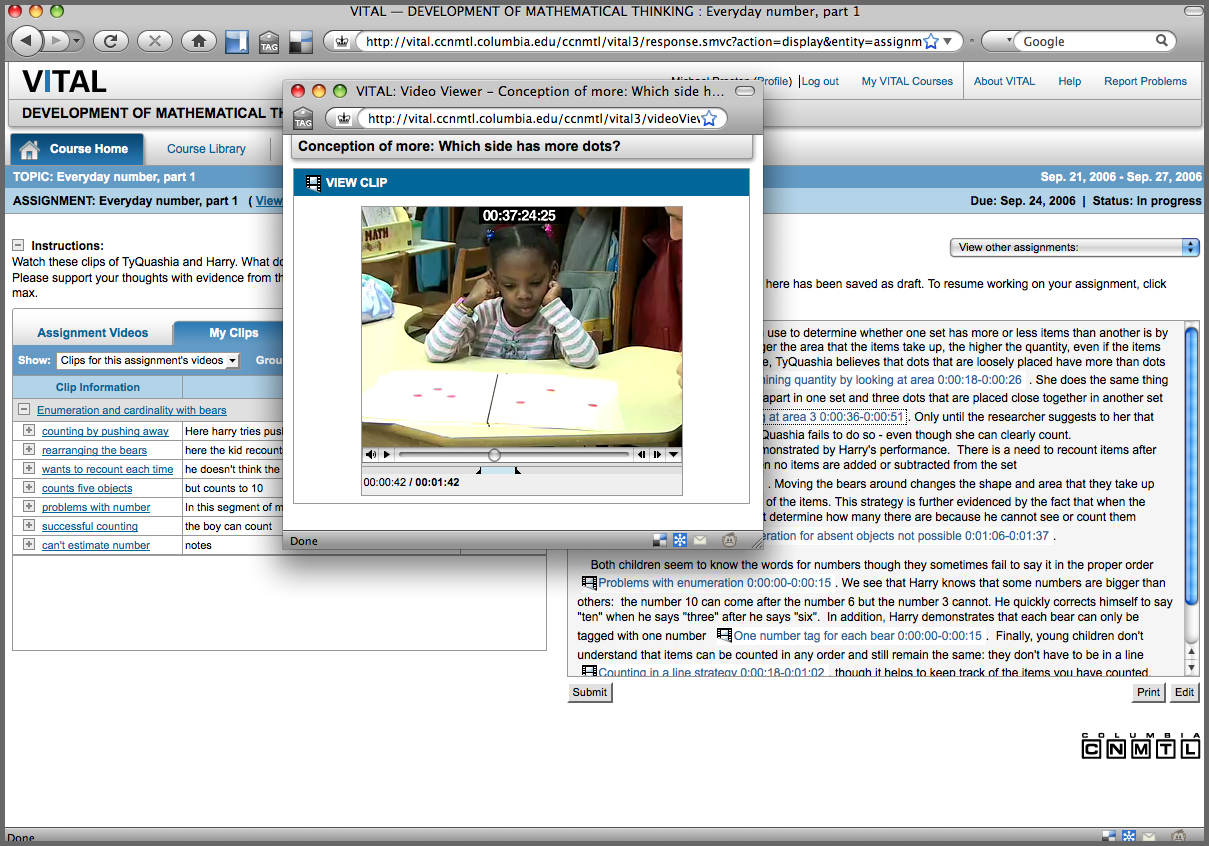A course "home" page in VITAL looks like a conventional syllabus, with a list of topics, readings, and assignments, but it also includes a selection of videos for each topic that can be viewed by clicking on the links embedded in the page. (See Fig. 1.) A VITAL course can include any quantity of video, although typically instructors will construct a syllabus with a small number of required videos and a larger number of supplementary or optional videos.
 | ||
Fig. 1: A single week's topic from the syllabus in VITAL, including an assignment with one required video, followed by six recommended videos.
As mentioned earlier, VITAL offers several affordances that enable students to work with video at home via the Web. The first feature is a "video viewer" in which students can select and clip their own segments from the videos, and attach a note to each clip to help them remember the significance of the content. (See Fig. 2.) These clips and notes are saved in a personal workspace, where they can be accessed later and used to support an essay.
 | ||
Fig. 2: The VITAL video viewer, with editing tools and an annotation space beneath the video, and clips with notes collected in the right-hand column.
The second feature is a "multimedia essay" workspace where students can integrate their clips with text. (See Fig. 3.) For example, in Prof. Ginsburg's course on early childhood mathematics education, students are asked to write essays of 350 words or fewer in response to questions such as, "What do the children know about number? Please cite from the videos and the readings." These assignments encourage students to develop their own hypotheses and select evidence from the course material that supports their argument. Completed essays are "published" within the VITAL environment to be read by the instructor and other students. The instructor can also leave feedback for the student.
 | ||
Fig. 3: The multimedia essay, with the student's collected video clips on the left side of the screen, and a writing space incorporating text and video on the right. Students click or drag their video clips to add them to their essay.
In addition to multimedia essays, VITAL also support a "guided lesson" format in which instructors preselect video clips and organize them to be viewed in a specific sequence by students, who must answer questions associated with each video segment. Guided lessons are most typically used for teaching skills such as clinical interviewing, by simulating the process of responding to a child's behavior with an interpretation, a new question, or even a critique of the interviewer's technique in the video.
It should also be noted that students are able to contribute their own videos to VITAL, as well. In the final month of the course, Prof. Ginsburg's early mathematics education students complete an integrative project that involves designing a mathematical lesson or activity, trying it out with a child, and interviewing the child afterward to assess what he or she learned. The final project report submitted in VITAL serves as a demonstration of the students' ability to think critically--even scientifically--about the work they are doing as teachers and what a child might be learning as a result.
View the Student User Guide for VITAL.

